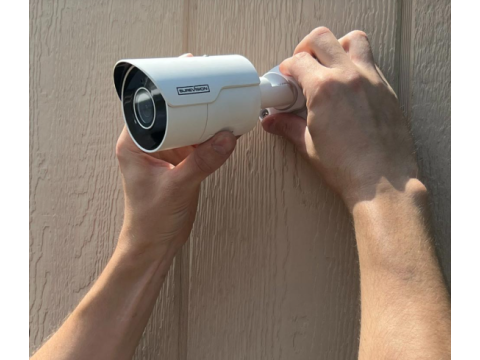Security Camera Systems for Private Homes: Installation and Connection
Installing a reliable security camera system for your private home is an essential step toward ensuring the safety of your property. Whether you aim to monitor your home while you're present or away, setting up cameras properly can optimize surveillance and minimize costs.
This guide provides actionable advice on:
- Camera placement and zone coverage.
- Connection options for cameras, including analog and IP systems.
- Using internet-based and standalone surveillance setups.
Optimal Placement of Security Cameras
For a private home, the surveillance zones can be divided into two main categories:
When occupants are present.
Cameras are positioned to monitor the perimeter, entrances, and key areas of the property.When the home is vacant.
Cameras can be connected to the internet for remote monitoring, typically via a smartphone or tablet.
Key Objectives:
- Ensure all entry points and movement pathways are under surveillance.
- Achieve the desired level of detail for identifying people or objects.
Suggested Camera Placement Tips
- Perimeter Surveillance: Cameras should cover the fence or property boundaries. For added protection, position cameras so each is within the view of at least one other.
- Building Exterior: Mount cameras on walls for better angles and easier cable routing.
- Interior Spaces: If needed, plan for hallways or entrances that require monitoring.
Technical Note:
For cameras with fixed focal lengths:
- 2.45–2.8mm lenses offer a wide view (100°).
- 3.6–4mm lenses provide an 80° field of view.
- 6mm lenses narrow the view to 50°, ideal for long-range focus.
Connecting Security Cameras in Private Homes
Analog Systems
Analog HD formats are often favored for private homes due to their cost-effectiveness and ease of use.
Typical Components:
- Cameras (CAM1 to CAMn).
- Power Supply (PSU).
- Digital Video Recorder (DVR).
- Monitor (optional, SCR).
Basic Analog Setup:
- Cameras transmit footage to the DVR via coaxial cables.
- DVR connects to a monitor for real-time viewing or playback.
- Power supplies should be configured per device requirements.
IP System Integration:
IP cameras connected to a recorder (NVR) maintain a similar setup. If PoE technology is supported, power can be supplied through the Ethernet cable, eliminating the need for separate power supplies.
Connecting Surveillance Systems to the Internet
For homeowners interested in remote monitoring, internet connectivity is crucial.
Recorder-Based Setup
- Connect the DVR or NVR to a router via an Ethernet cable.
- Ensure the router supports remote access to enable viewing from a smartphone or PC.
Direct IP Camera Setup
- Router Connection: IP cameras can connect directly to the router if ports are available.
- Using a Switch: For larger setups, use a network switch to manage multiple cameras.
Network Security Tips:
- Use strong passwords for devices.
- Update firmware regularly to protect against vulnerabilities.
Conclusion
A well-planned security camera system tailored to your private home ensures effective surveillance and peace of mind. Whether you choose analog, IP, or hybrid setups, understanding your home's unique requirements and leveraging proper installation techniques can significantly enhance security.
Invest time in designing an optimal layout and choosing the right technology to safeguard your home effectively.

